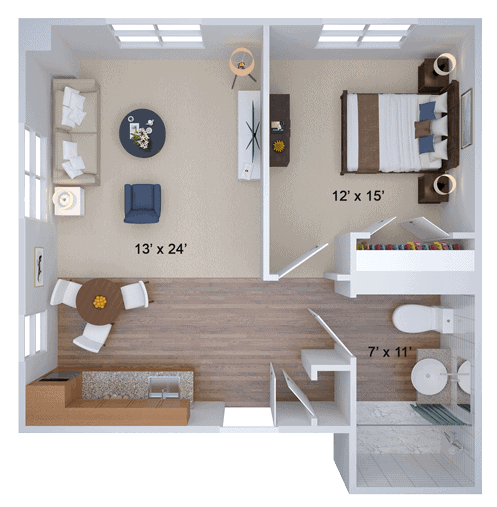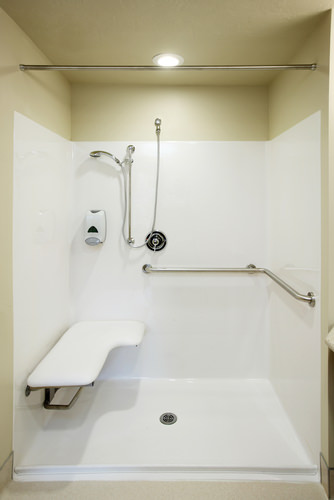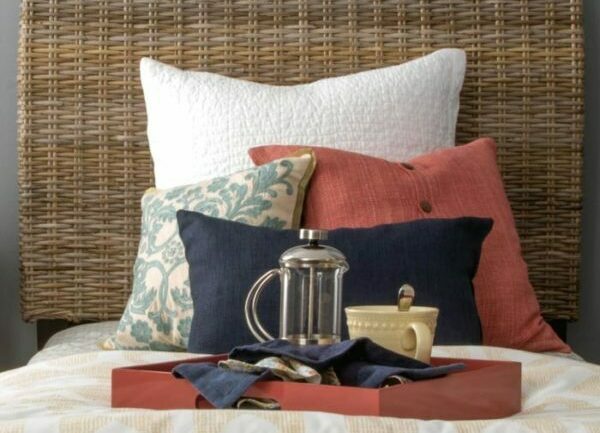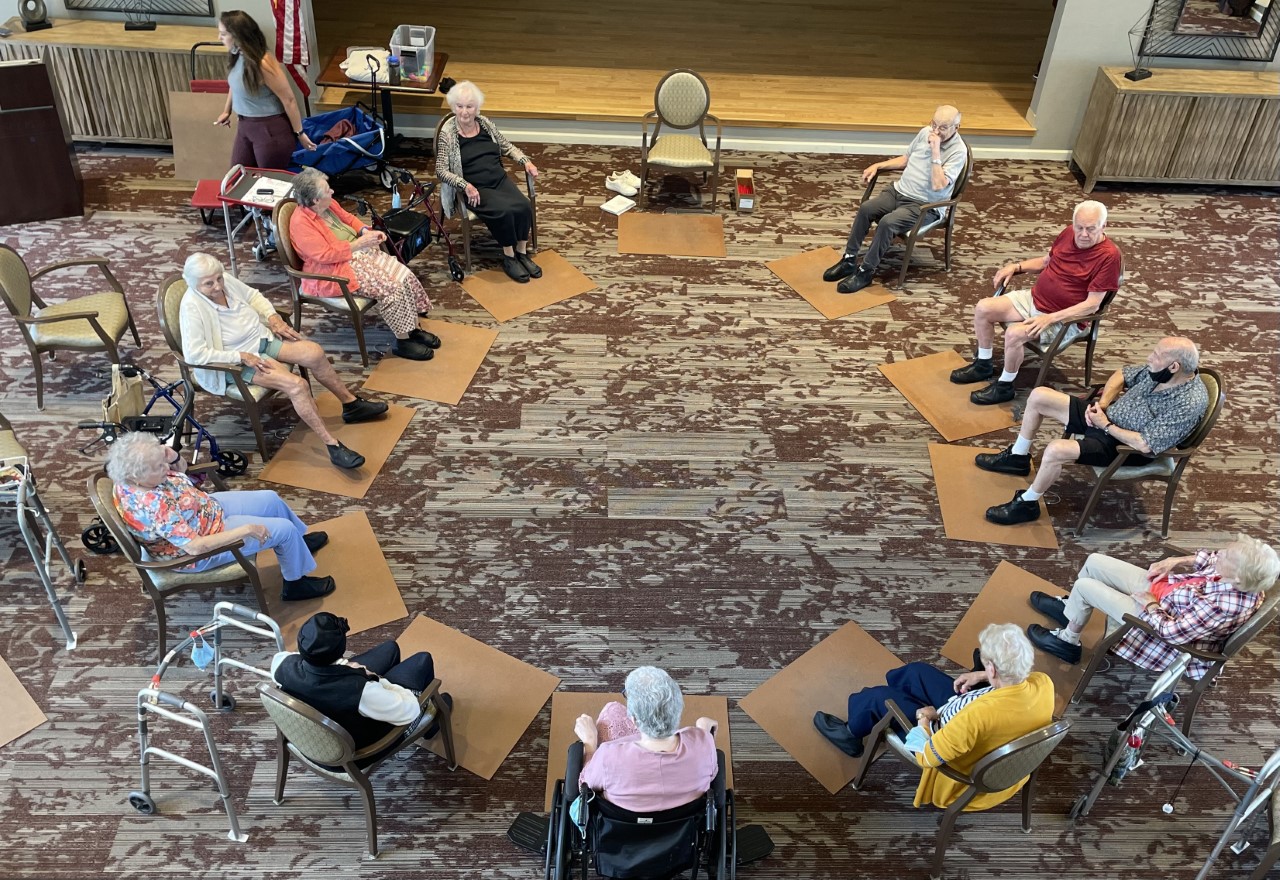There is strong evidence that one’s home and living environment are closely linked to their well-being. Homes provide security, control, belonging, identity, privacy, and more. The home and having a sense of place are significant to peoples’ lives.
As people age, different considerations regarding their living environments emerge, and homes must evolve to meet their changing needs.
To maintain the comfort of home, but also ensure that it is safe, there are many options to consider.
It is important to keep health and safety in mind regarding the interior design of a home, whether new or old, to make it the best place it can be.
Areas to Target and What To Do
Taking the time to implement healthier and safer options in a home can help older adults live more comfortably. Some adjustments are easy to make, such as selecting new furniture, changing the layout of various rooms, swapping out light fixtures, trying new decorating tips, updating home goods, and decluttering.
Other health and safety changes may require more planning. Examples include new floor installations, upgrading bathroom fixtures, such as a bathtub or shower, and swapping out appliances.

Learn more about designing for seniors.
General Living Space
Most people spend the greatest amount of time in their general living space. Below are some tips to make this space healthy and safe:
- Choose tabletops with rounded edges rather than sharp, angled edges to prevent injury.
- Avoid glass tabletops that can reflect light and make it more difficult to see.
- Provide seating for guests to encourage socialization.
- Hang family photos and artwork to remove tabletop clutter.
- Choose sofas and side chairs that are comfortable but are not too soft or deep. Make sure the seating options have enough structure in the back, as well as armrests for strong support to assist with sitting and standing.
- If desired or needed, install grab bars on the walls next to couches or chairs to make standing up easier.
- Create a clean, simple furniture arrangement that is both easy to navigate and cleared of clutter.
- Arrange the room to easily accommodate a walker or wheelchair, if necessary. According to the National Association of Home Builders, a five-foot-by-five-foot space leaves enough room to navigate with mobility aids.

See how you can update your living room to be safer and more secure.
Kitchen
Kitchens are often a focal point of a home and are essential for entertaining guests. Below are some tips for keeping this space functional while also healthy and safe:
- Store sharp objects, such as knives, in a rack and not a drawer.
- Choose a side-by-side or drawer-style refrigerator for easier access.
- Place lighting over the sink, stove, and other work areas.
- Be sure stove controls are easy to see.

Bath
Bathrooms are necessary for any home, but modifications may be useful as people age. The following tips can make the bathroom safer to use:
- Use non-slip rugs.
- Replace any slick floor tiles with a slip-resistant option such as textured vinyl flooring.
- Consider a hands-free toilet for automatic flushing or a comfort height toilet that is 17-19 inches high and can be better for a person’s knees and back.
- Place non-skid surfaces on the bottom of the tub or shower.
- Consider a walk-in or no-threshold shower to eliminate the need to step over a tub.
- Securely install bath aids such as railings and grab bars to help with balance.
- Install an adjustable, handheld showerhead for better maneuverability.
Bedroom
The bedroom is a sanctuary where people can comfortably relax, unwind, and sleep. To maintain this calm, and make it as safe as possible, follow the tips mentioned below:

- Consider an electric, adjustable bed to make getting out of bed easier and safer.
- Install easily accessible dimmers or convenient bedside lamps for greater ease of turning the lights on and off.
- Improve access to plugs by using a power strip or a nightstand with connectors on top.
- Maximize closet space and provide easy access to a variety of personal belongings by utilizing adjustable rods and shelves as well as a closet organizing system.
General suggestions
In order to incorporate health and safety into interior design, here are some additional tips.

Lighting
- Consider touch control lamps or other hands-free devices for lights and electronics.
- Use lampshades to reduce glare.
Electrical Cords
- Tuck loose cords behind furniture to avoid tripping over them and remove them from all walking areas.
- Use cord covers.
Clutter
- Keep your space clean and clutter-free, especially where you walk.

Get more information about design tips for safety.
- See how simple modifications can make a home more livable for everyone.
- Learn more about universal design.
- Discover important aging in place interior design ideas.
Memory Care Tips
When faced with the added challenge of memory issues, thoughtful interior design suggestions can help make a space easier to navigate, more comfortable, healthier, and safer.
General living area
- Layer sofa and chairs with pillows and throws of different textures that appeal to the person’s sense of touch.
- Avoid shiny floors to reduce glare.
- Place automatic, light-sensor nightlights in hallways and rooms.
Bath
- Consider using a toilet seat in a color other than white.
- Use contrasting colors to find items more easily.
Bedroom
- Add colorful pillowcases or pillows with textures to create contrast from the headboard or wall.
- Use nightlights all around the room to show a clear pathway to other areas of the home.
- Use contrasting colors for sheets, blankets, and bedspreads.
Downsizing and Donations
As a person updates their home, they will need to sort through a lot of items accumulated over time.
Letting go of items acquired over the years can be extremely difficult, but also liberating. Sorting through possessions is a process that brings memories of the past while helping define what is most important in the present.
Here are some ways to make the sorting and selection process easier:
- Enlist relatives or friends to help make decisions.
- Offer items to family members and friends.
- Donate what is not needed or wanted to charities—it’s a great way to help others.
Here are some organizations that are always looking for donations:
| Organization | Phone | Website |
| Big Brothers, Big Sisters | 800-483-5503 | www.bbbsfoundation.org |
| Household Goods Recycling of MA | 978-635-1710 | householdgoods.org |
| Massachusetts Coalition for the Homeless | 781-595-7570 | www.mahomeless.org |
| Society of St. Vincent de Paul | 800-675-2882 | www.svdpboston.com |
| The Salvation Army | 1-800-SA-TRUCK (728-7825) | www.salvationarmy.org www.satruck.org |
| Vietnam Vets of America | 800-775-8387 | www.clothingdonations.org |
For more tips on how to make a new environment, such as an assisted living community, feel more like home, and tips for getting rid of or donating items, click here.
To better incorporate health and safety in interior design, try to follow these tips. As a person ages in place, there are different options to consider—a variety of senior living arrangements support independence while delivering many other benefits including more social opportunities, fun activities, and nutritious, prepared meals; people often thrive in new and more supportive environments.
SALMON Health and Retirement offers many levels of service throughout their full “continuum of care.” Contact us here if you have any questions.
For additional design ideas, click here.
About Us
Organizations such as SALMON Health and Retirement are ready and able to offer assistance so your loved one can have their best life possible, even as their needs increase. SALMON Health and Retirement provides a full spectrum of senior living choices and helps support your caregiving efforts.




